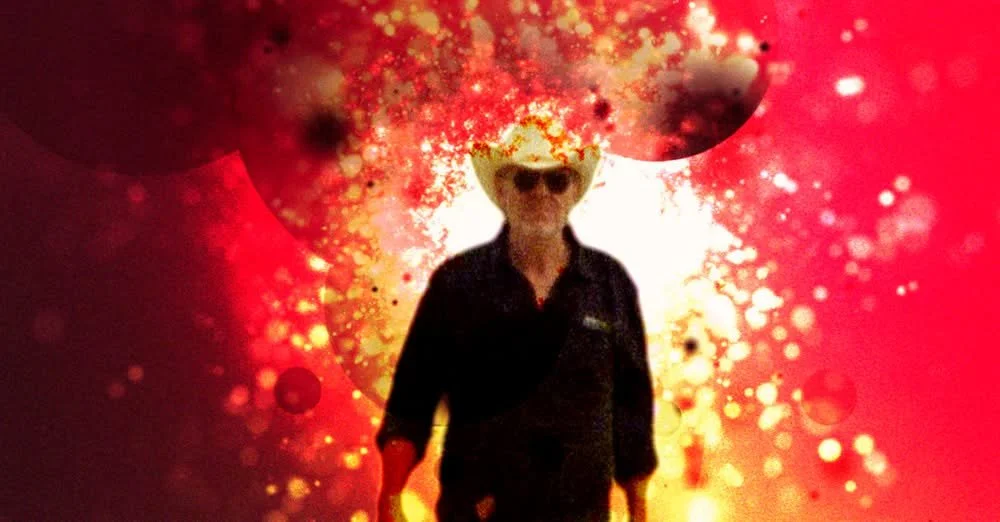Sound, Structure & Solvent: Producing the SWANS Doc
Sometime in my late teenage years, I went on a date with a lovely young woman who was, without question, much cooler than I.
We went record shopping—an act that, back then, carried a certain devotional weight. She bought Children of God by SWANS. I already had Filth and Holy Money, but only as a home-taped cassette, probably with a hand-drawn logo scrawled down the spine. I wasn't a proper fan yet. I didn't quite get it. Not yet.
After visiting the record store, we returned to my apartment—a septic and squalid little box I shared with entirely too many other young deviants. The only room with a lockable door became our temporary sanctuary. We brought in a couple of bottles of Boone's Farm and put on the LP.
We listened to it once. Then again.
In that tiny locked room, under the low ceiling of youth and possibility, I got it. I had what can only be described as a life-changing musical epiphany—a moment of such intensity that it felt like it came from outside the body and went straight through it. The music of SWANS has been with me ever since.
In the early 2000s, I corresponded with Michael Gira about creating a documentary about SWANS. It was a genuine conversation with fundamental ideas and real potential, but it never came to fruition. Life, work, money. I had to make a living, and chasing doc nirvana doesn't come with health insurance. The timing wasn't right, so I let it go.
Years later, I got a call from Jarboe. She was performing with SWANS in Atlanta and needed a last-minute shoot arranged to include the event in a SWANS documentary already in production. That shoot introduced me to Marco Porsia.
We hit it off immediately. The same reverence for the band, the same visual instincts, and the same borderline-pathological dedication to getting it right. He had already climbed several mountains to get the project off the ground. I offered to help in any way I could.
I joined the team as a producer - also handling motion design, animation, and the title sequence. But really, I was there to serve a larger purpose—to help Marco realize the vision he had been chasing for years.
Where Does a Body End? isn't a typical music documentary. It doesn't try to explain or domesticate SWANS or attempt a neutral history. It moves with the same weight and luminosity as the music. There's a kind of cinematic homeostasis at play—one that doesn't just chronicle the band but vibrates sympathetically with it.
One of my contributions to the film was designing the title sequence—an attempt to translate the scale and sensation of SWANS into motion. At the time, I kept returning to ideas of particle accelerators and supernovas—forces of origin, unfathomable energy made visible. I wasn't trying to create something violent—I wanted to render something ecstatic—a field of motion dense with potential. The sequence plays with scale confusion. Are we seeing atoms or galaxies? Dust or stars? A cellular shimmer or a cosmic bloom? That ambiguity was the point. The music of SWANS compresses the infinite and the intimate until they become indistinguishable. It spirals inward and outward at once.
The animation is built around particle simulations, but I wasn't chasing realism; I wanted something that felt like resonance, like gravity pulling meaning into form. Swarming, blooming, refracting, coalescing. Less a title sequence than a transmission. A pulse from something larger than itself.
Because SWANS aren't just listened to. They are lived in. They are ritual and reckoning. The sound is structure, but also wave. It surrounds and fills. It overwhelms not to erase but to reveal.
There is beauty in the saturation, ecstasy in the endurance, and a radiant totality that pushes you beyond narrative and into sensation. You don't just hear it; you dissolve into it. And if you're lucky, you come back changed.
The film premiered at IndieLisboa in 2019. It was picked up, praised, and written about. Der Spiegel called it "the brutally loud roar of existence," which might be the most perfect description imaginable.
And me? I just feel lucky to have been a part of it. To have touched the thing that touched me all those years ago. To help shape the container that holds, however imperfectly, that signal.


